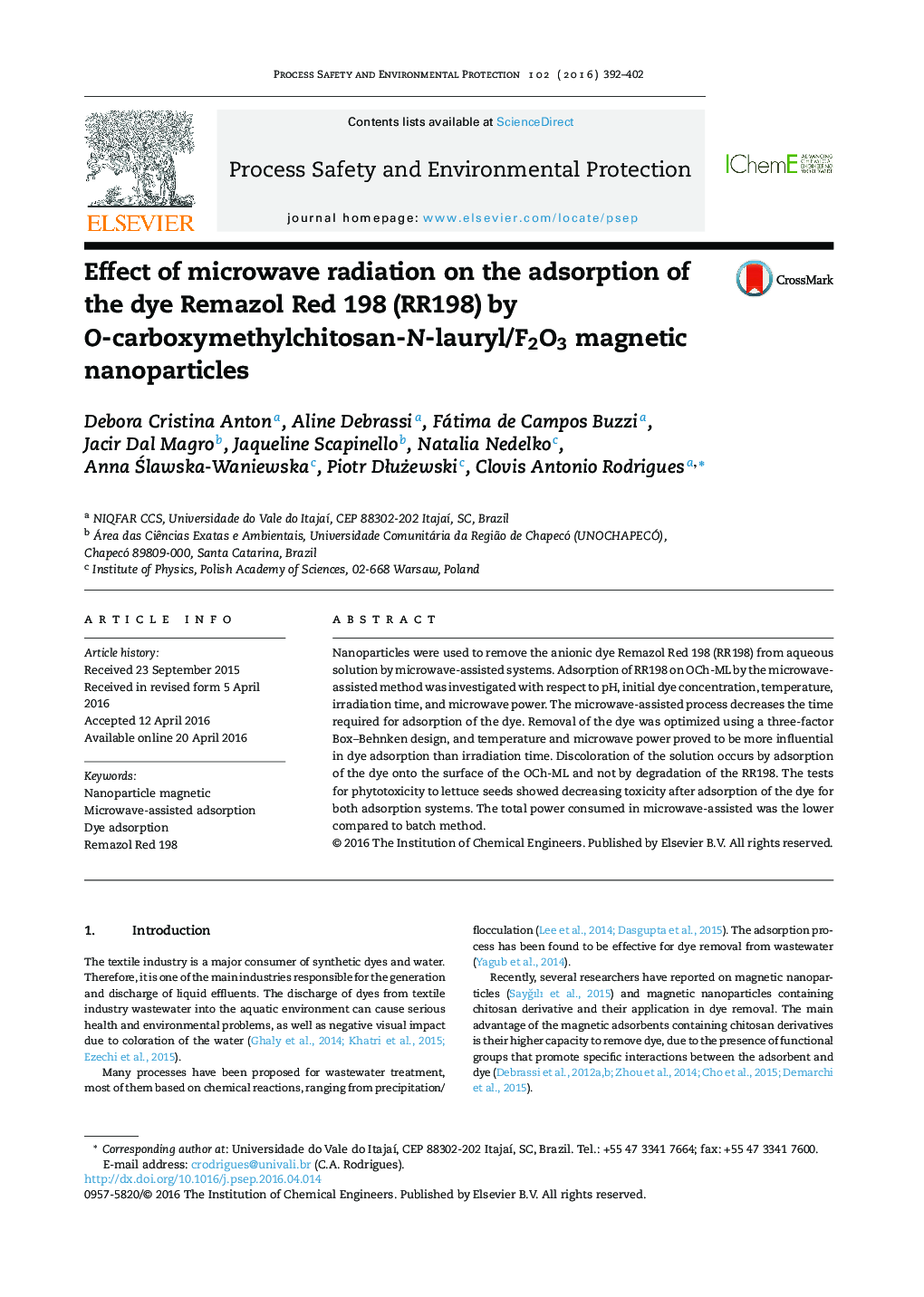| Article ID | Journal | Published Year | Pages | File Type |
|---|---|---|---|---|
| 588093 | Process Safety and Environmental Protection | 2016 | 11 Pages |
•The microwave radiation accelerates the discoloration process of dye solution.•Microwave radiation process does not degrade the dye.•Adsorption microwave consumes less energy than the adsorption by batch.•The resulting solution of the discoloration process was non-phytotoxic.
Nanoparticles were used to remove the anionic dye Remazol Red 198 (RR198) from aqueous solution by microwave-assisted systems. Adsorption of RR198 on OCh-ML by the microwave-assisted method was investigated with respect to pH, initial dye concentration, temperature, irradiation time, and microwave power. The microwave-assisted process decreases the time required for adsorption of the dye. Removal of the dye was optimized using a three-factor Box–Behnken design, and temperature and microwave power proved to be more influential in dye adsorption than irradiation time. Discoloration of the solution occurs by adsorption of the dye onto the surface of the OCh-ML and not by degradation of the RR198. The tests for phytotoxicity to lettuce seeds showed decreasing toxicity after adsorption of the dye for both adsorption systems. The total power consumed in microwave-assisted was the lower compared to batch method.
Graphical abstractFigure optionsDownload full-size imageDownload high-quality image (245 K)Download as PowerPoint slide
